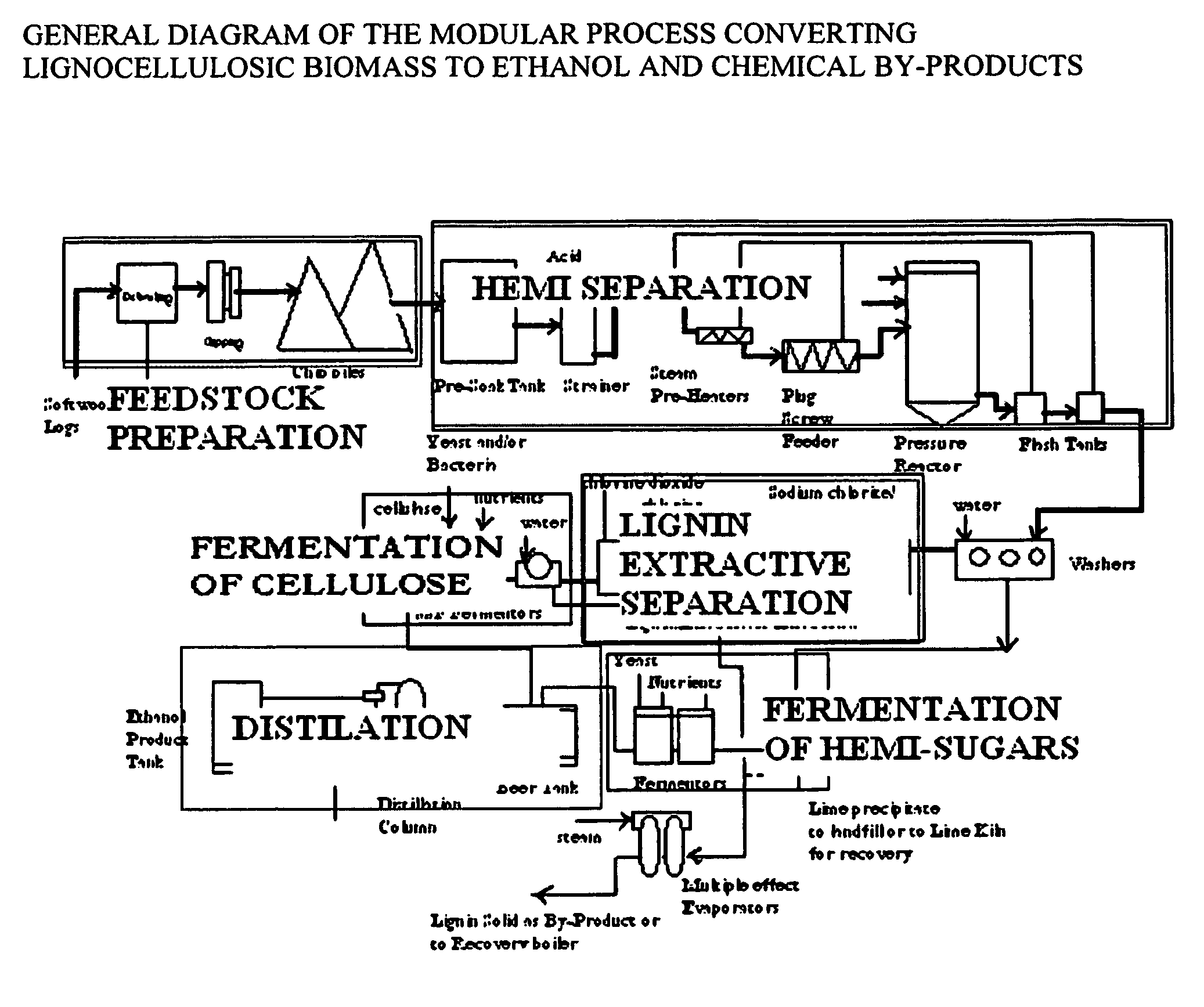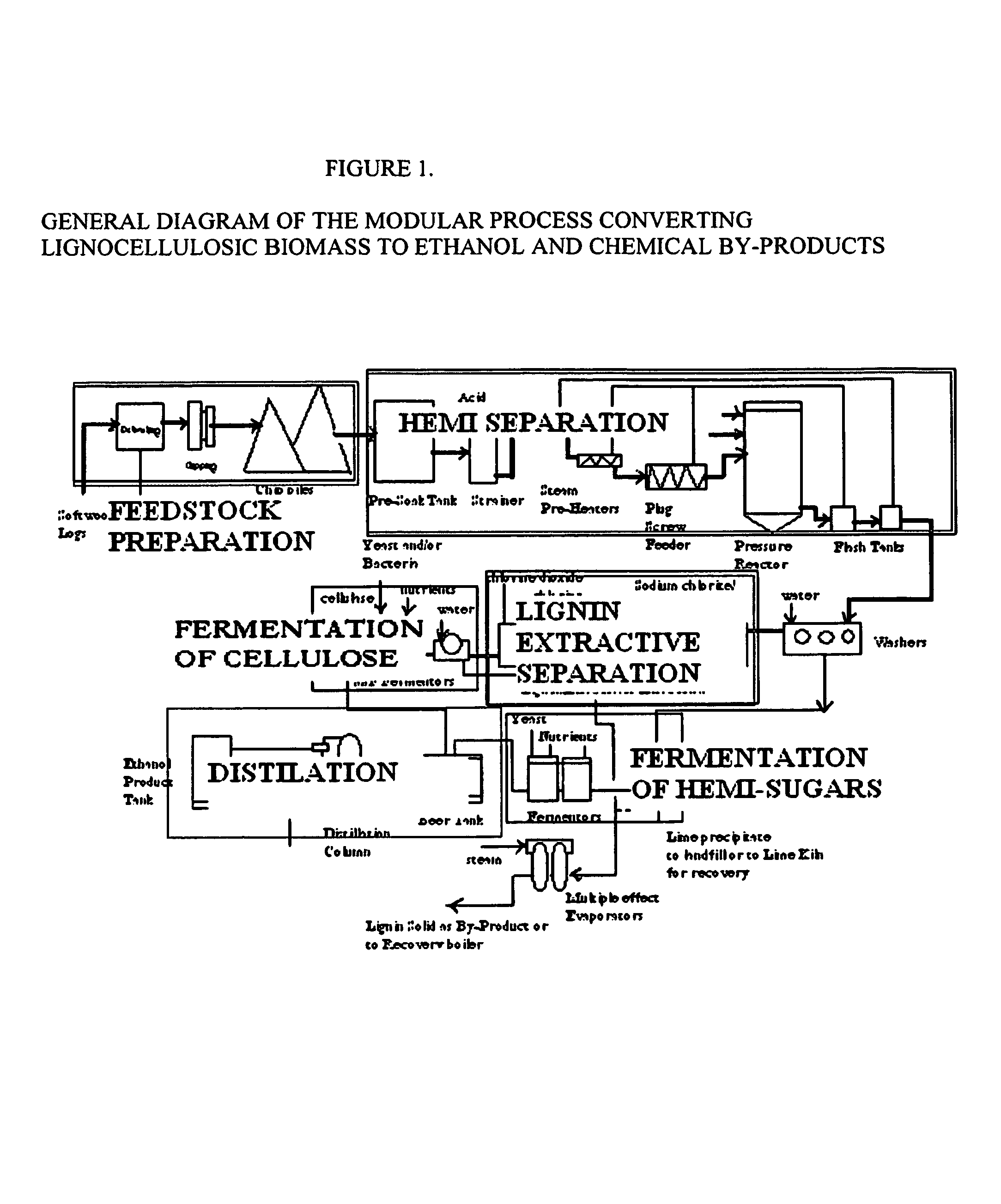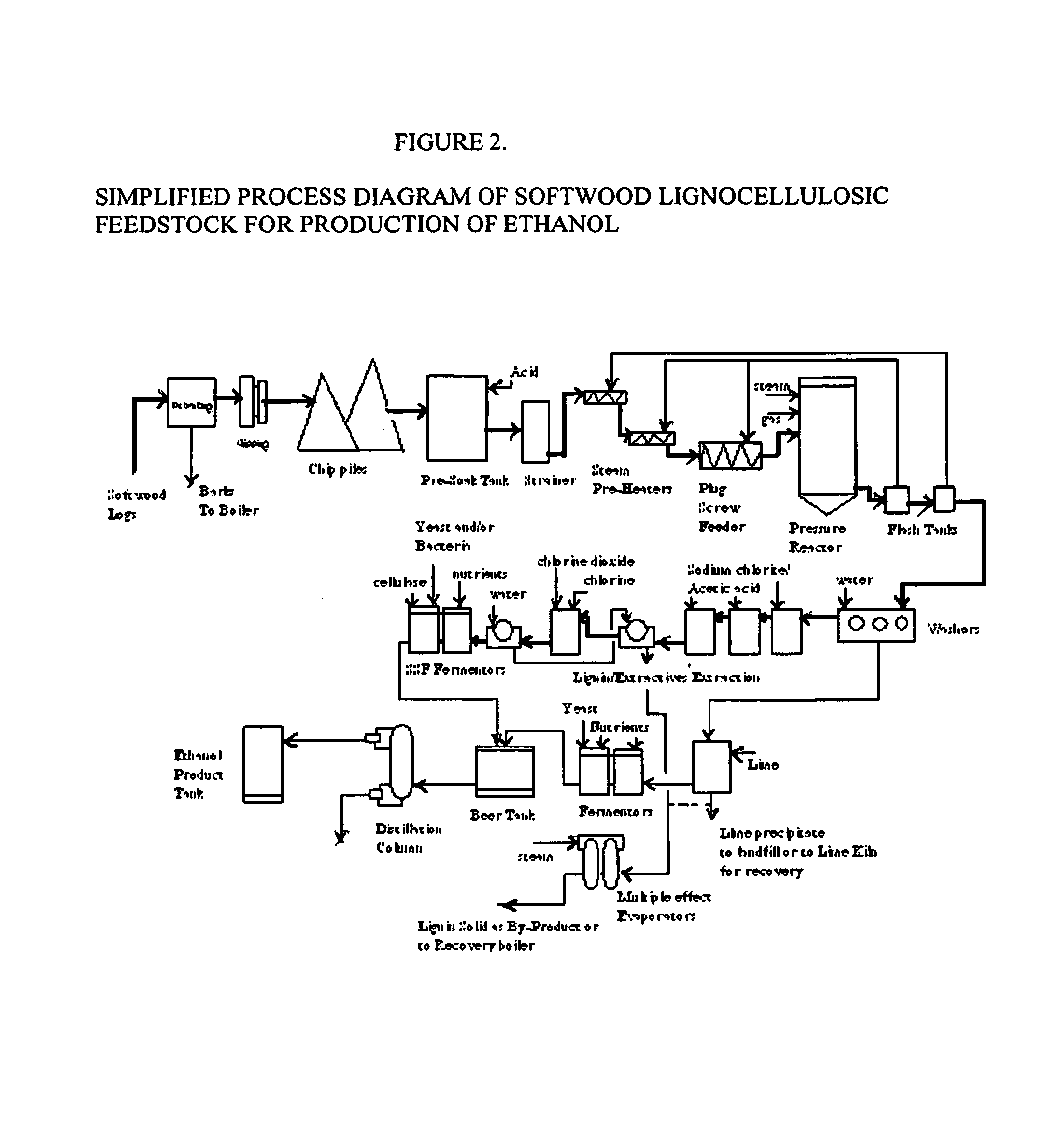Integrated process for separation of lignocellulosic components to fermentable sugars for production of ethanol and chemicals
a technology of lignocellulosic components and fermentable sugars, which is applied in the field of integrated process for separation of lignocellulosic components to fermentable sugars for production of ethanol and chemicals, can solve the problems of unpredictability, inability to avoid sugar degradation and toxic byproduct formation, and inability to degrade cellulose in a large degree in unpretreated conditions, etc., and achieves cost-effective and robust effects
- Summary
- Abstract
- Description
- Claims
- Application Information
AI Technical Summary
Benefits of technology
Problems solved by technology
Method used
Image
Examples
example 1
[0067]In this example, the biomass feedstock of hardwood (oak, gum, aspen) sawdust and chips (¼ to ¾ inch) at typically 50% to 60% moisture content is pre-soaked with an acid solution which is pre-heated to about 85 Centigrade with 30 psig saturated steam from the blow tank for approximately 60 minutes in the acid impregnator.
[0068]Various types of acids used in the prehydrolysis stage can be added to the impregnator. If gaseous sulfur dioxide is used, no water is added. If another strong acid such as sulfuric, hydrochloric, or nitric or any strong acid which effect pH values below about 3, is used, a dilute solution of one of these acids is heated with low pressure flash steam from about 40. to about 80 Centigrade before adding to the impregnator
[0069]Because of the low cost and relative ease of handling, sulfuric acid is selected in the dilute acid hydrolysis process. Acid impregnation is achieved by soaking the biomass in dilute acid solution, under elevated temperature and press...
example 2
[0083]In this example the feedstock is white and brown waste papers.
[0084]The shredded waste paper mixture consists of 40% white bond paper and 60% brown carton, box, clippings, etc. The mixture is disintegrated in a repulper where plastic, wires, dirt, rock are removed. The stock mixture exiting the repulper at approximately 3-4% consistency are cleaned further with centri-cleaners to further remove dirt and sand. After cleaning, the mixture is chemically treated with 2-stage sodium chlorite / anhydrous acetic acid to remove lignin and extractives. Total charges in two stages are 5%, which is about 1.1 times the lignin content of the mixture. The ratio by weight of sodium chlorite to anhydrous acetic acid is maintained at 5:1 in both stages.
[0085]The temperature of the reactor is maintained in the range of 120-180 Fahrenheit; and the residence time of the reactor is 3-4 hours. After exiting from the first stage reactor, the solid is separated from the filtrate without washing. The so...
example 3
[0091]In this example, mixture of feedstock of hardwood (oak, gum, aspen) and softwood (pine, spruce, firs) sawdust and chips (¼ to ¾ inch) at typically 50% to 60% moisture content is pre-soaked with an acid solution which is pre-heated to about 85 Centigrade with 30 psig saturated steam from the blow tank for approximately 60 minutes in the acid impregnator.
[0092]A dilute solution sulfuric acid is heated with low pressure flash steam from about 40 to about 80 Centigrade. before adding to the impregnator to affect a pH of 3 or below. To thoroughly soak the biomass in the acid solution, a residence time of about 1 to 2 hours is required. The acid-soaked feedstock is drained or squeezed to about 35% solids upon exiting the impregnator. The feedstock is further dewatered to about 40% to about 60% solids using a centrifuge. The sulfuric acid concentration of the liquid in the biomass prior to feeding into the first-stage hydrolyzer is in the range of from about 0.2% to about 4.0% by wei...
PUM
| Property | Measurement | Unit |
|---|---|---|
| thickness | aaaaa | aaaaa |
| pH | aaaaa | aaaaa |
| pH | aaaaa | aaaaa |
Abstract
Description
Claims
Application Information
 Login to View More
Login to View More - R&D
- Intellectual Property
- Life Sciences
- Materials
- Tech Scout
- Unparalleled Data Quality
- Higher Quality Content
- 60% Fewer Hallucinations
Browse by: Latest US Patents, China's latest patents, Technical Efficacy Thesaurus, Application Domain, Technology Topic, Popular Technical Reports.
© 2025 PatSnap. All rights reserved.Legal|Privacy policy|Modern Slavery Act Transparency Statement|Sitemap|About US| Contact US: help@patsnap.com



